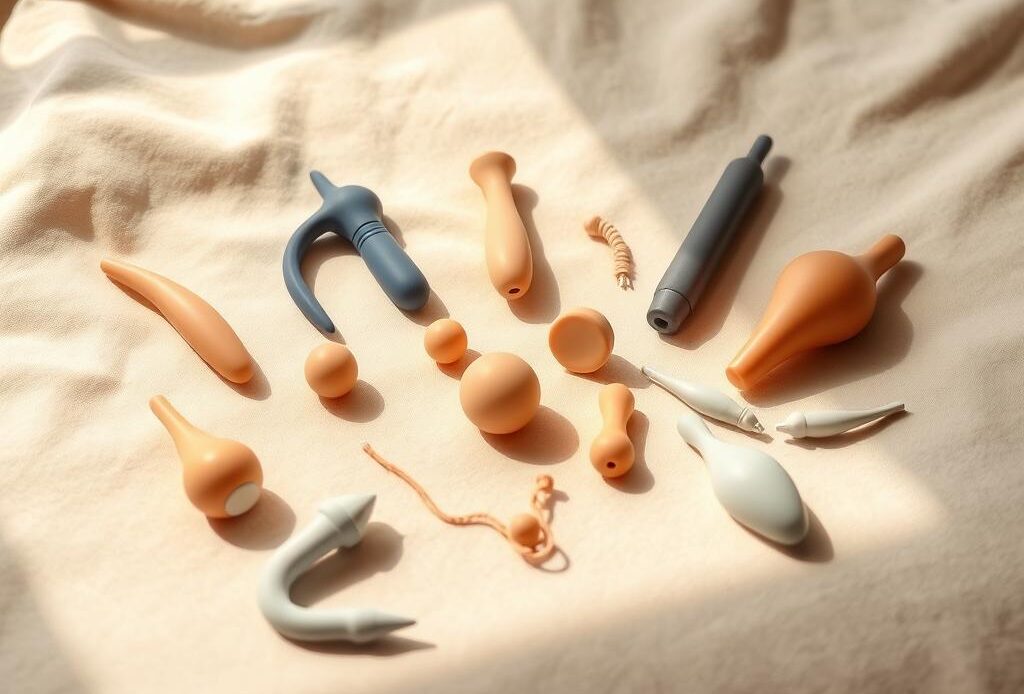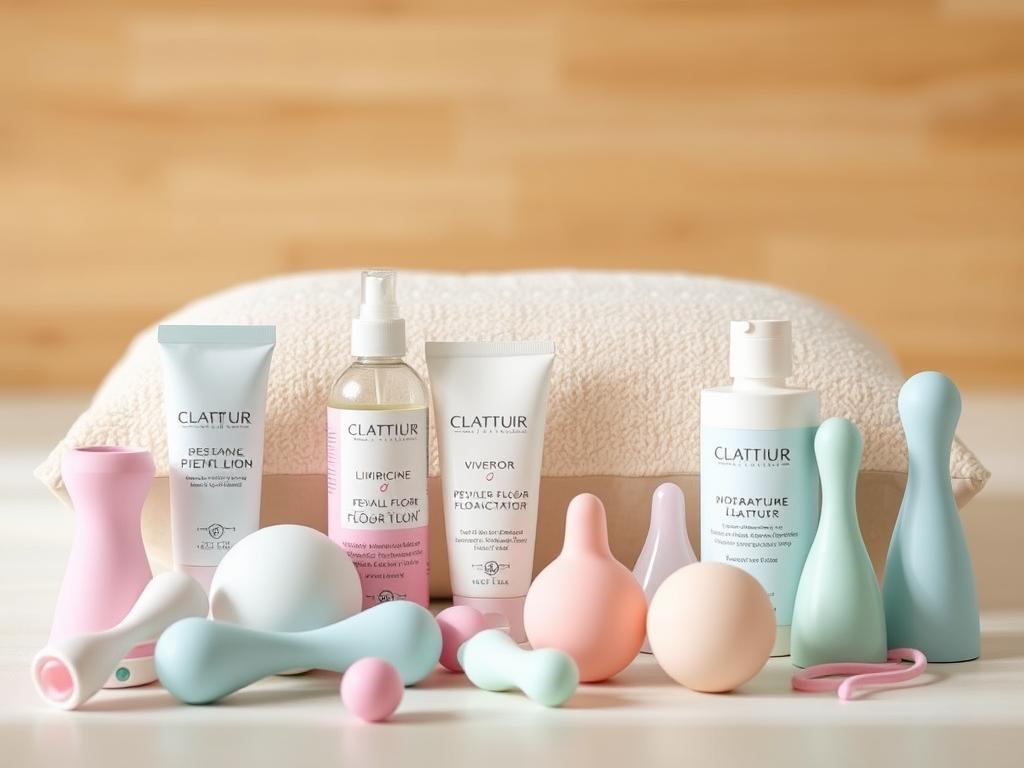
Welcoming a new baby brings profound changes – including questions about physical recovery and emotional connection. Many parents wonder when it’s safe to explore closeness again, especially when considering personal wellness products. Let’s walk through this journey together with kindness and evidence-based insights.
Healthcare professionals often recommend waiting 4-6 weeks before certain activities, though recovery timelines vary. The American College of Obstetricians and Gynecologists (ACOG) emphasizes that healing isn’t just physical – emotional readiness matters too. Whether you’re dealing with vaginal delivery recovery or C-section scars, your body deserves patience.
We’ve designed this guide to help you:
- Understand typical recovery milestones
- Choose body-safe products if desired
- Communicate needs with partners
Open conversations with your care provider are crucial. Did you know 68% of new parents report needing clearer guidance about post-birth intimacy? That’s why we’re combining medical advice with real-world experience to create a roadmap for this sensitive phase.
Key Takeaways
- Healing timelines differ – always consult your healthcare team first
- Non-penetrative connection often resumes earlier than other activities
- Material safety matters when selecting personal wellness items
- ACOG guidelines suggest gradual reintroduction of intimacy
- Emotional recovery is as important as physical healing
- Communication with partners improves shared experiences
- Self-care routines support overall well-being during transitions
Introduction: Understanding Postpartum Changes
The weeks following childbirth bring transformations that touch both body and heart in unexpected ways. New parents often describe this phase as a rollercoaster—where joy meets exhaustion, and physical healing dances with emotional vulnerability. Let’s unpack what’s happening beneath the surface.
What to Expect Physically and Emotionally
Hormonal shifts after delivery can feel like nature’s whiplash. Estrogen levels drop sharply, sometimes leading to vaginal dryness or changes in tissue elasticity. These physical realities often collide with sleep deprivation, creating a perfect storm for feeling disconnected from one’s usual self.
Emotionally, many report a tug-of-war between craving closeness and feeling overwhelmed. “It’s normal to experience conflicting desires,” notes a recent study on new parent well-being. Your relationship dynamics might shift as you balance caregiving roles with personal needs.
Our Journey Through Postpartum Recovery
Rebuilding connection isn’t a race—it’s a gradual realignment. Partners often discover new ways to bond through non-physical gestures while bodies heal. Open dialogue becomes essential, whether discussing discomfort or rediscovering what feels good.
Remember, this period isn’t permanent. With time and patience, most find their rhythm again. In the next sections, we’ll explore practical strategies for nurturing both physical comfort and emotional bonds during this transitional chapter.
When Is It Safe to Resume Intimacy?
Finding your rhythm after childbirth requires balancing medical wisdom with personal comfort. While many wonder about timelines, true readiness involves more than calendar dates—it’s about honoring your body’s unique recovery story.
Understanding Medical Recommendations
The American College of Obstetricians recommends waiting six weeks as a general guideline. This window allows initial tissue repair and reduces infection risks. However, studies show 42% of parents feel ready earlier or later than this benchmark.
“Take time” isn’t just advice—it’s biology. Your body completes complex healing processes that can’t be rushed. Look for these signs of progress:
- Stopped bleeding/lochia
- Comfort during daily movements
- Emotional stability with physical touch
Every person needs time differently. Some feel ready at four weeks, others after three months. There’s no universal schedule—only what works for your recovery journey. Communicate openly with healthcare providers about discomfort or concerns.
Physical healing matters, but emotional readiness completes the picture. ACOG notes that stress hormones can delay tissue repair by up to 30%. This makes self-care and patience essential partners in your recovery process.
Healing After Birth: Physical and Emotional Recovery
Rebuilding strength after delivery requires both patience and practical steps. Whether through vaginal birth or cesarean, bodies undergo remarkable changes that demand thoughtful care. Up to 25% of parents experience physical complications like perineal tears or surgical site concerns, according to recent obstetric studies.
Gentle movement plays a crucial role in healing. Experts recommend starting with these foundational exercises:
| Activity | Benefit | Timing |
|---|---|---|
| Pelvic floor breaths | Restores diaphragm-core connection | Day 1 postpartum |
| Supported bridges | Strengthens glutes safely | Week 3-4 |
| Short walks | Boosts circulation | When bleeding stops |
Emotional healing often mirrors physical progress. “Parents who prioritize rest report better mood stability,” notes a 2023 maternal health review. Simple acts like hydrating regularly or accepting help with laundry become powerful recovery tools.
Open communication with healthcare providers helps navigate challenges. Nearly 1 in 3 parents need guidance addressing birth-related concerns—don’t hesitate to ask. Remember, healing from childbirth isn’t linear, but each small choice builds toward renewed vitality.
Exploring Postpartum Sex Toy Safety
Rediscovering personal pleasure after childbirth involves thoughtful choices that honor your body’s new normal. Gentle exploration can support both physical comfort and emotional connection during this transitional phase.

Types of Sex Toys Suitable for Postpartum Use
Silicone-based vibrators with adjustable settings offer customizable intensity. Many find external massagers less intrusive than penetrative options during early recovery. “Focus on products designed for sensitivity,” advises certified sex educator Mara Hearst. “Broad-surface toys often feel more comfortable than pinpoint stimulation.”
Safety Considerations and Expert Advice
Water-based lubricants complement natural moisture changes better than silicone variants. Cleanliness matters—opt for non-porous materials that withstand thorough washing. Start with brief sessions to gauge comfort levels, gradually exploring new sensations.
Recent studies highlight that 58% of parents benefit from open conversations about intimacy tools with their care providers. Simple practices like checking in with your body before and after use help maintain confidence. Remember, rediscovering your sexuality is a journey, not a destination—kindness and curiosity make the best travel companions.
Reconnecting With Your Partner
New parenthood reshapes relationships in ways we never anticipate. Sleepless nights and shifting priorities can create emotional distance, even between the closest couples. Navigating this transition requires patience and creative approaches to staying connected.
Building Bridges Through Conversation
Research shows 63% of couples experience mismatched desire levels during early parenthood. “Non-sexual touch becomes essential when energy runs low,” explains relationship therapist Dr. Lena Moreno. Simple gestures like hand-holding or shoulder rubs maintain physical bonds without pressure.
Try these connection-boosting strategies:
- Schedule weekly check-ins to share feelings
- Use “I feel” statements to express needs
- Celebrate small moments of closeness
Many find discussing sex drive changes awkward but necessary. One study revealed partners who address these shifts early report 40% higher relationship satisfaction. Remember, intimacy isn’t just physical—emotional safety forms its foundation.
Boundaries matter too. Maybe you’re comfortable with cuddling but need time before deeper connection. Voice these preferences kindly. As Dr. Moreno notes: “True closeness grows when both people feel heard.”
Rebuilding your bond takes time, but every honest conversation plants seeds for renewed partnership. What gentle step could you take today to nurture your connection?
Understanding and Strengthening Your Pelvic Floor
Your pelvic floor acts like a supportive hammock, quietly influencing everything from posture to pleasure. These muscles stretch during pregnancy and birth, often needing targeted care to regain strength. Research shows 41% of parents experience pelvic floor changes affecting daily life—making rehabilitation essential for comfort and confidence.
Basic Exercises for Renewed Strength
Gentle activation helps rebuild muscle tone without strain. Try these expert-approved starters:
- Kegel pulses: Contract for 3 seconds, release for 5—repeat 10 times
- Breath-linked lifts: Inhale deeply, exhale while gently lifting pelvic muscles
- Seated squeezes: Engage muscles while sitting, hold through 3 slow breaths
“Consistency matters more than intensity,” advises pelvic health specialist Dr. Elena Torres. “Two daily sessions of 5 minutes show better results than occasional long workouts.”
Recognizing When to Ask for Help
Persistent discomfort or leakage during laughter suggests professional guidance could help. Physical therapists specializing in pelvic health use biofeedback tools to personalize recovery plans. Early intervention often leads to faster improvements in muscle control and comfort during intimate moments.
Strengthening these muscles enhances blood flow, which 2023 studies link to improved libido and heightened physical sensations. Celebrate small wins—like holding a contraction longer—as stepping stones toward renewed vitality. Your journey back to strength deserves patience and applause.
Addressing Pain and Discomfort During Postpartum Intimacy
Navigating physical closeness after childbirth can feel like learning a new language. Hormonal shifts and healing tissues often create temporary changes in sensation. Nearly 40% of parents report discomfort during early attempts at connection, according to 2023 pelvic health research.
Common causes of tenderness include:
| Source | Impact | Practical Response |
|---|---|---|
| Low estrogen levels | Thinner vaginal tissues | Hydration + water-based lubricants |
| Muscle tension | Pelvic floor stiffness | Gentle stretching before intimacy |
| Scar tissue | Localized sensitivity | Massage with medical-grade oil |
Many wonder why familiar things feel different now. “Birth alters nerve pathways temporarily,” explains Dr. Rachel Nguyen, OB-GYN. Start with non-pressured exploration—perhaps light touch rather than direct stimulation. Communicate openly about what feels comfortable today versus last month.
Frequent questions often center around achieving orgasm without discomfort. Try these approaches:
- Focus on external pleasure zones first
- Use pillows for supportive positioning
- Pause to check in with your body every few minutes
If pain arises, slow down. Discomfort can become a cycle if ignored—your nervous system remembers unpleasant experiences. “Pain-free connection builds confidence,” notes a recent intimacy study. Celebrate small victories, whether that’s five minutes of comfortable cuddling or discovering new ways to connect.
Tips for Enhancing Postpartum Libido and Pleasure

Rediscovering intimacy after childbirth can feel like solving a puzzle with new pieces. Simple adjustments often make the biggest difference in rebuilding connection while respecting your body’s evolving needs.
Hydration’s Hidden Superpower
Water-based lubricants become essential allies during this phase. Leading OB-GYN Dr. Alicia Park notes: “Even minor dryness can affect comfort—quality lubes reduce friction without disrupting natural pH.” Consider these options:
| Type | Best For | Duration |
|---|---|---|
| Hybrid formulas | Sensitive skin | 45-60 minutes |
| Aloe-based | Immediate relief | 30 minutes |
| Vitamin E blends | Long-term moisture | 6-8 hours |
Curiosity as Connection
Variety sparks joy when energy levels allow. Try these gentle ideas:
- Massage with textured gloves
- Temperature play using warm towels
- Focus on non-genital erogenous zones
Recent studies show parents who introduce new activities report 33% higher satisfaction in their intimate lives. Start small—even 10 minutes of focused touch can reignite sparks. Remember, pleasure thrives when exploration feels playful rather than pressured.
Embracing Your Changing Body and Sexuality
Our bodies tell stories of strength through every stretch mark and scar. Pregnancy and birth reshape us in ways that go beyond physical appearance—they rewrite how we relate to pleasure and self-image. “These changes aren’t flaws,” says body-positive therapist Dr. Naomi Chen. “They’re proof of what our bodies have accomplished.”
Hormonal shifts after having a baby can temporarily alter how we experience touch. Estrogen levels dip, sometimes making tissues more sensitive. These biological factors interact with emotional ones—like adjusting to new roles—to shape our confidence. A 2024 study found parents who practice self-compassion report 27% higher sexual satisfaction during this phase.
Three key factors influence how we view ourselves:
- Cultural messages about “bouncing back”
- Physical comfort during daily activities
- Supportive conversations with partners
Your body’s ability to grow life doesn’t diminish its capacity for joy. Pleasure evolves alongside you—maybe feeling deeper, slower, or more intentional. As Dr. Chen notes: “Rediscovery starts with curiosity, not comparison.”
Finding your place in this new landscape takes time. Some days you might marvel at your resilience; others, you’ll mourn pre-pregnancy spontaneity. Both are valid. Start small—a warm bath, a loving mirror affirmation, or simply noticing how your skin feels when touched gently.
Every stretch and shift carries wisdom. Our bodies remain vibrant vessels of connection, shaped by the incredible journey of bringing life into the world. What gentle step could you take today to honor yours?
Nurturing Emotional Wellbeing in the Postpartum Period
Caring for a new child reshapes our emotional landscape in ways we can’t always see. This transformative period demands gentle attention to both visible and invisible needs. Like tending a garden, emotional health thrives when nurtured daily—one small, consistent act at a time.
Small Acts, Big Impact
Our bodies work tirelessly during recovery, but mental wellness often needs equal care. Studies show parents who prioritize 10-minute self-care routines experience 35% less stress. Try these simple practices:
- Morning sunlight exposure to regulate mood
- Evening gratitude journaling
- Hydration reminders linked to feeding times
“Emotional recovery isn’t about grand gestures,” explains psychologist Dr. Maya Torres. “Micro-moments of mindfulness create lasting resilience.” Even pausing to breathe deeply while rocking your child counts as self-care.
Challenges like sleep deprivation can make consistency hard. Focus on flexibility rather than perfection. If yesterday’s walk didn’t happen, try a 3-minute stretch today. Our changing bodies deserve compassion—they’re adapting to new rhythms while sustaining life.
| Quick Reset | Time Needed | Benefit |
|---|---|---|
| Humming meditation | 2 minutes | Calms nervous system |
| Hand massage | 5 minutes | Reduces tension |
| Herbal tea ritual | 7 minutes | Promotes relaxation |
Nurturing our health during this period strengthens every connection—including intimate ones. When we approach ourselves with patience, we model emotional intelligence for our growing families. What tiny act of kindness could you gift yourself today?
Creating a Safe and Comfortable Bedroom Environment
The space we share holds quiet power in shaping our connections. Small changes can transform ordinary rooms into sanctuaries where relaxation and closeness flourish. Let’s explore how thoughtful design choices help people feel grounded while nurturing bonds.
Start with lighting—dimming options like dimmable lamps or string lights create warmth without harsh glare. Research shows soft illumination reduces stress hormones by up to 25%, making it easier to unwind. Pair this with breathable bedding that supports your body’s needs, whether that’s cooling bamboo sheets or plush mattress toppers.
Consider these elements for a welcoming atmosphere:
- Neutral wall colors that calm the mind
- Blackout curtains for uninterrupted rest
- Personalized touches like framed photos or meaningful art
Positioning matters too. Keeping both sides of the bed accessible ensures neither person feels confined. A 2023 interior design study found partners who customize their sleep space report a stronger sense of partnership. Try adding individual nightstands to honor personal preferences while maintaining unity.
Remember, your environment should reflect your story. Whether through textured throw pillows or calming essential oil diffusers, let the room whisper comfort. When people cultivate spaces that spark joy, they naturally feel more attuned to each other’s rhythms. What one small change could deepen your sense of sanctuary today?
Conclusion
Our path through new parenthood weaves physical healing with emotional discovery. This guide highlights a measured way to rebuild connections—one that blends professional wisdom with personal intuition. Every choice, from healing timelines to exploring products, becomes part of your unique story.
Experts remind us there’s no single way forward. What matters most is honoring your body’s signals while leaning on evidence-based practices. A renewed drive for closeness often emerges naturally as strength returns, like spring buds after winter.
Three principles light the path:
1. Communication builds bridges—with partners and care providers
2. Self-care fuels both recovery and joy
3. Gradual exploration creates lasting confidence
Your journey matters exactly as it unfolds. Whether you’re embracing new routines or rediscovering old ones, each step reflects courage. Let kindness be your compass, and let safe choices drive your satisfaction.
We walk this road together, learning as we grow. Every thoughtful decision plants seeds for a fulfilling next chapter—one where connection thrives in its own perfect time.
FAQ
How soon can we reintroduce intimacy after childbirth?
Timing varies based on individual healing and birth type. Most healthcare providers recommend waiting 4–6 weeks, but always consult your OB-GYN first. Emotional readiness matters just as much as physical recovery.
Are certain products better for gentle postpartum use?
Yes! Opt for body-safe silicone or medical-grade materials with smooth textures. Smaller, adjustable vibrators like the Lelo Sona 2 or non-insertive options reduce strain on sensitive areas. Avoid porous materials that trap bacteria.
What pelvic floor exercises can we start early?
Begin with breath-focused Kegels: Inhale deeply, then exhale while gently lifting your pelvic muscles. Short 2–3 second holds, 10 reps daily, build strength without overexertion. Apps like Kegel Trainer offer guided routines.
Why does discomfort persist even after clearance?
Hormonal shifts (like lower estrogen) and scar tissue sensitivity are common. Water-based lubes such as Sliquid Naturals help, but consult a pelvic therapist if pain continues. Emotional factors like stress can also heighten tension.
How do we reignite desire when exhausted?
Start with non-sexual touch—massage, cuddling, or shared showers. Schedule short “connection windows” during naps. Explore sensory play with feather ticklers or warming gels to awaken nerves gently. Prioritize rest—fatigue is a libido killer.
What if our intimacy styles clash during this phase?
Use “I feel” statements to express needs without blame. Try apps like Paired for guided conversations. Alternate planning date nights—one partner chooses movies, the other picks snacks. Small gestures rebuild closeness.
How can we make our space feel inviting?
Soft lighting (dimmable bulbs or salt lamps), noise machines to mask baby monitors, and clean bedding set the mood. Keep a caddy with essentials—lube, wipes, a cozy blanket—to minimize prep stress. Redefine “romantic” around convenience.

